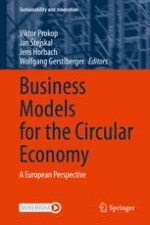2022 | OriginalPaper | Buchkapitel
Sustainable Circular Business Models: The Circular Economy Needs Responsibility and Purpose to Fulfil its Promises
verfasst von : Christoph H. Wecht, Beate Cesinger, Christine Vallaster, Natalie Aleksić
Erschienen in: Business Models for the Circular Economy
Aktivieren Sie unsere intelligente Suche, um passende Fachinhalte oder Patente zu finden.
Wählen Sie Textabschnitte aus um mit Künstlicher Intelligenz passenden Patente zu finden. powered by
Markieren Sie Textabschnitte, um KI-gestützt weitere passende Inhalte zu finden. powered by
